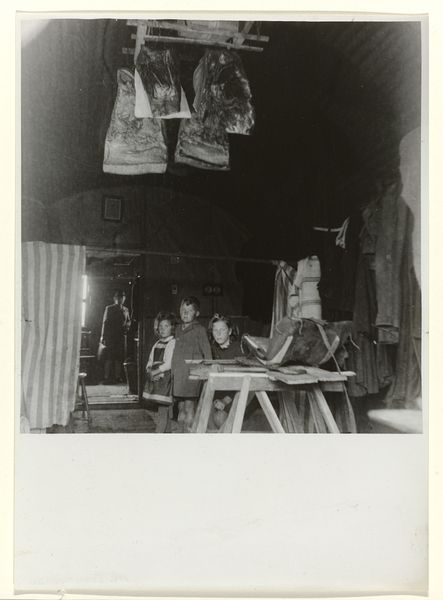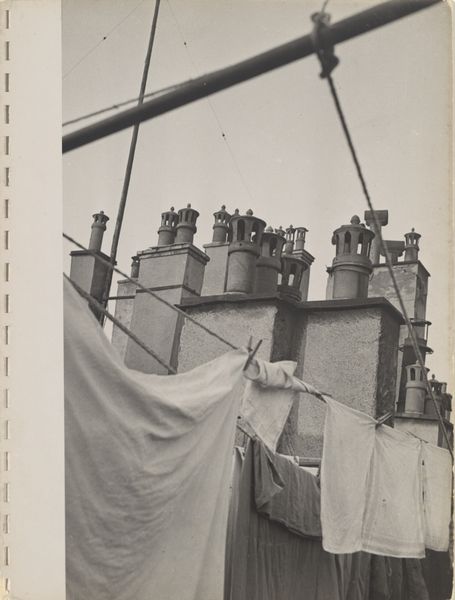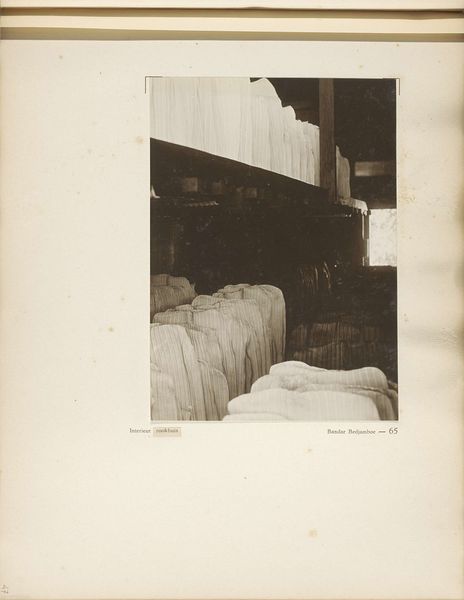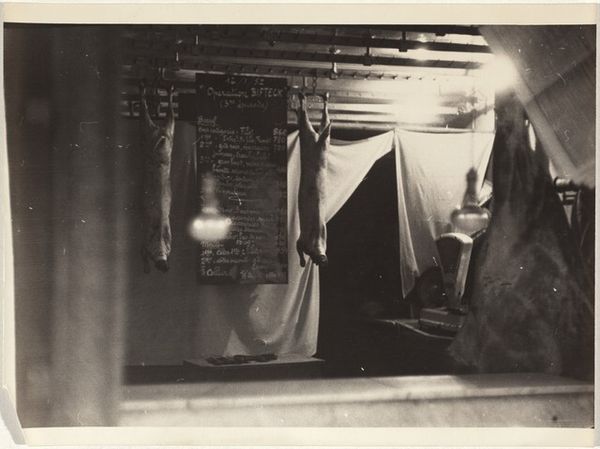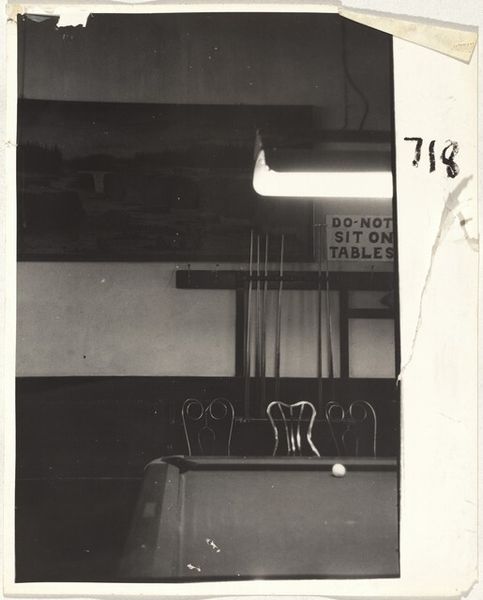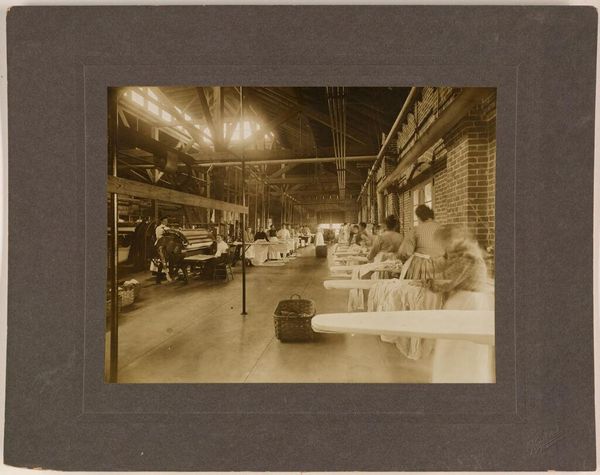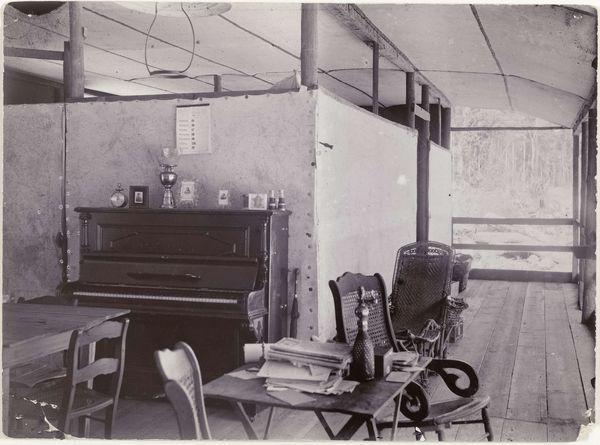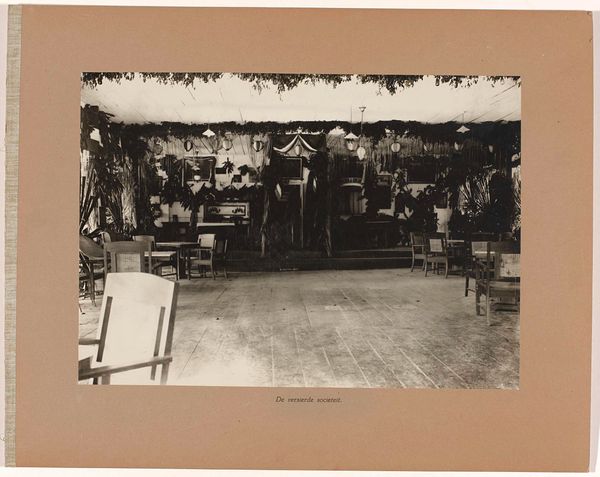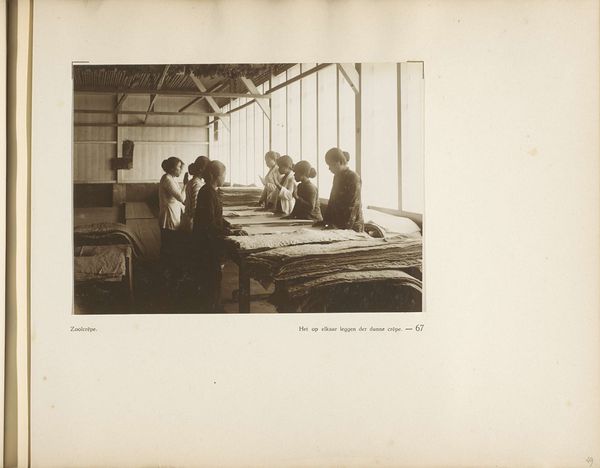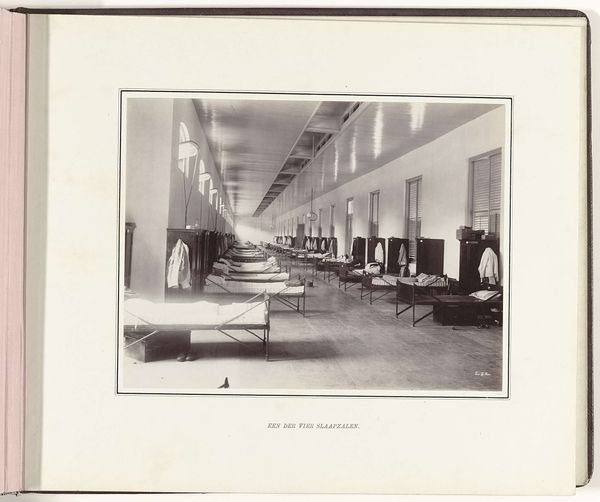
Dimensions: sheet: 20.3 x 25.3 cm (8 x 9 15/16 in.)
Copyright: National Gallery of Art: CC0 1.0
Editor: We're looking at Robert Frank's "Closed Street Vendors, Paris" from 1951, a photograph printed on, well, photographic paper. The stark black and white and the closed shops evoke a sense of post-war somberness. What can you tell me about this piece? Curator: What immediately strikes me is the use of very specific materials and how they’re presented: white cloth draped over what are clearly work surfaces – the vendors’ tables. Consider how this choice impacts the overall reading of the piece. These aren't pristine museum artifacts but ordinary, functional textiles employed for protection and storage. Editor: So, the choice of simple, functional materials is key. Does it say something about the economic climate of Paris at the time? Curator: Absolutely. Post-war Paris wasn’t about grand boulevards alone; it was about the daily struggles of vendors trying to eke out a living. The photograph implicates us, the viewers, in a system of production and consumption. Frank isn’t glorifying Parisian grandeur; he’s drawing attention to the conditions of labor, and how objects – the cloth, the tables, even the vegetables that may lie underneath – participate in that system. Editor: The drape is almost ghostly. Are we meant to infer anything from the anonymity the covers are providing to the vendors? Curator: It removes any sense of individual labor and suggests more on a commentary on a system in action; the process matters more than the vendors themselves, and emphasizes how their existence depended on a whole chain of materials and resources to begin with. The vendors might just as well be ghosts as Frank documents the daily processes of an industry. Editor: I didn't think of it that way. I was too focused on the melancholy feeling, but looking at it from a production standpoint gives the image much more depth. Curator: Precisely. By thinking about the materials and the labor involved, we gain a better grasp of the image's power.
Comments
No comments
Be the first to comment and join the conversation on the ultimate creative platform.
